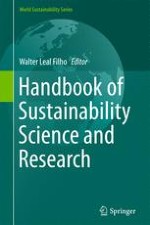2018 | OriginalPaper | Chapter
Transportation Infrastructure Project Evaluation: Transforming CBA to Include a Life Cycle Perspective
Authors : Heather Luclaire Jones, Filipe Moura, Tiago Domingos
Published in: Handbook of Sustainability Science and Research
Publisher: Springer International Publishing
Activate our intelligent search to find suitable subject content or patents.
Select sections of text to find matching patents with Artificial Intelligence. powered by
Select sections of text to find additional relevant content using AI-assisted search. powered by
